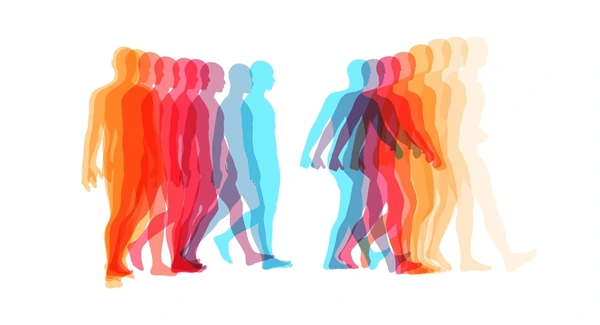Individual movements refer to exercises and actions performed independently, tailored to meet personal fitness goals, needs, and lifestyle. Unlike group classes or team sports, individual movements provide the flexibility to design a fitness routine that suits one’s physical abilities, preferences, and schedule. Whether practiced in a gym, at home, or outdoors, these activities empower individuals to focus on their unique health goals, personal growth, and well-being.
What Are Individual Movements?
Individual movements are self-directed exercises or fitness activities that do not require group participation. They can range from basic bodyweight exercises and flexibility movements to intense strength training and cardiovascular activities. These movements enable individuals to work at their own pace, set specific fitness goals, and take control of their health journey.
Benefits of Individual Movements
- Flexibility and Convenience: They can be done anytime and anywhere, from home workouts to park activities, providing great flexibility.
- Personalized Pace: Individuals can work at their own pace, ideal for beginners or those returning to fitness.
- Focus on Personal Goals: Each activity is tailored to meet specific health, fitness, or wellness goals.
- Building Self-Motivation: Practicing movements individually fosters self-discipline and personal motivation.
- Cost-Effective: Many individual exercises require little to no equipment, making them budget-friendly.
Types of Individual Movements
1. Cardiovascular Movements
Cardio-focused activities strengthen the heart, improve stamina, and boost calorie burn. They vary in intensity and can be tailored to any fitness level.
- Running and Jogging: Popular for cardiovascular health, running builds endurance and leg strength.
- Cycling: Ideal for low-impact cardio; whether on a stationary bike or outdoors, it’s joint-friendly and effective.
- Skipping/Jump Rope: Excellent for quick, high-calorie burn, improving coordination, and cardiovascular health.
- Power Walking: A low-impact yet effective cardio activity that enhances stamina and heart health.
2. Strength Training Movements
Strength training focuses on building muscle, enhancing bone density, and improving overall strength.
- Bodyweight Exercises: Exercises like push-ups, squats, and lunges use body weight to build strength without equipment.
- Weight Lifting: Incorporating dumbbells, kettlebells, or barbells enhances muscle mass and strength.
- Resistance Band Workouts: Lightweight and portable, resistance bands provide various levels of resistance to target different muscle groups.
- Core Strengthening: Planks, Russian twists, and leg raises build core strength, improving posture and balance.
3. Flexibility and Mobility Movements
Flexibility and mobility exercises are crucial for joint health, muscle relaxation, and improved body movement.
- Stretching: Daily stretching routines improve range of motion, reduce muscle tension, and prepare the body for more intense movements.
- Yoga: Combining flexibility, strength, and mindfulness, yoga offers benefits across both physical and mental wellness.
- Pilates: Focuses on controlled movements, flexibility, and core strength, often done on a mat or with specialized equipment.
- Dynamic Warm-Ups: Movements like arm circles, leg swings, and walking lunges that enhance joint mobility before workouts.
4. Balance and Coordination Movements
These exercises enhance stability, coordination, and overall body control, which can benefit both fitness and daily life.
- Single-Leg Stands: Simple but effective, standing on one leg improves balance and strengthens stabilizing muscles.
- Heel-to-Toe Walk: Walking in a straight line while placing the heel directly in front of the toes enhances coordination and balance.
- Tai Chi Movements: This practice combines slow, controlled movements, benefiting balance and mental focus.
- Bosu Ball Exercises: Using a Bosu ball for squats, lunges, or planks adds an element of balance training to any routine.
5. High-Intensity Movements
High-intensity individual movements, such as HIIT, allow for quick, intense bursts of exercise followed by short rest intervals. These workouts are efficient, effective, and can be customized to various levels.
- Burpees: A full-body, high-intensity movement combining squats, push-ups, and jumps.
- Mountain Climbers: Great for cardio and core strength, this movement engages multiple muscle groups.
- Jump Squats: Adding a jump to the squat increases intensity, building leg strength and cardiovascular endurance.
- Sprints: Short-distance sprints improve speed, stamina, and muscle power.
Building an Individual Movement Routine
Creating a personalized fitness routine with individual movements is simple and adaptable. Here’s how to get started:
- Identify Goals: Define what you want to achieve—whether it’s building muscle, increasing endurance, or improving flexibility.
- Choose Movements for Variety: Combine cardio, strength, flexibility, and balance exercises to ensure a well-rounded routine.
- Set a Schedule: Plan your movements throughout the week to create consistency and make progress over time.
- Monitor Progress: Keep track of your performance, noting any changes in strength, endurance, or flexibility.
- Adjust as Needed: Tailor the routine to fit your lifestyle, adjusting intensity or duration as fitness improves.
Tips for Success in Individual Movements
- Start Gradually: If new to fitness, begin with basic movements and gradually increase intensity.
- Stay Consistent: Consistency is key; even short daily sessions yield long-term benefits.
- Listen to Your Body: Rest when needed, especially if muscles feel sore or joints uncomfortable.
- Focus on Form: Correct form is essential to prevent injury, especially in strength training.
- Enjoy the Process: Choose activities you enjoy to maintain motivation and make fitness a positive part of your day.
Conclusion
Individual movements offer the flexibility and freedom to build a fitness routine that fits seamlessly into any lifestyle. From enhancing cardiovascular health to building muscle, flexibility, and balance, these exercises provide a foundation for a healthier, more active life. Embracing individual movements is a step toward taking charge of one’s physical well-being, cultivating self-motivation, and achieving personalized health goals.
Whether you’re aiming to get stronger, move more, or simply enjoy a more active life, individual movements bring the power of fitness directly into your hands.


